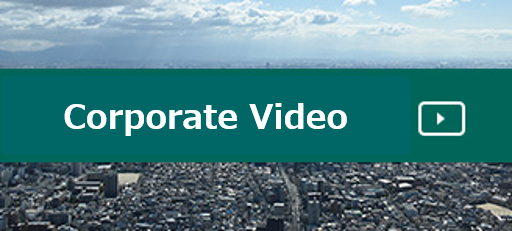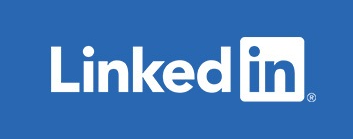The five directly invested Group's domestic insurance company subsidiaries*1 of MS&AD Insurance Group Holdings, Inc. ("The Company") declare that they support and accept the Asset Owner Principles*2 announced by the Cabinet Secretariat on August 28, 2024.
The MS&AD Insurance Group ("The Group") will fulfill its asset owner responsibilities by developing an appropriate organizational structure and risk management framework and by making sound investments that ensure safety, profitability and liquidity in line with investment targets and policies that take into account the economic and financial environment, with the aim of ensuring the payment of policyholder claims and benefits and the performance of all other liabilities, as well as contributing to business continuity and the sustainable growth of enterprise value.
*1 The Group's domestic insurance companies that have declared their acceptance of the Asset Owner Principles are Mitsui Sumitomo Insurance, Aioi Nissay Dowa Insurance, Mitsui Direct General Insurance, Mitsui Sumitomo Aioi Life Insurance and Mitsui Sumitomo Primary Life Insurance. The Company also supports the Asset Owner Principles.
*2 The "Asset Owner Principles" announced by the Cabinet Secretariat
Principle 1.
Asset owners should take into account the best interests of beneficiaries. In doing so, they should determine the purpose of investing, and then set investment targets and policies based on the purpose through an appropriate process, taking into account the economic and financial situation. The purpose of investing, targets, and policies should be reviewed as appropriately in response to changes in situations.
The Group has set out the Group asset management standards as common group guidelines, and conducts asset management as follows, with the aim of ensuring the payment of policyholder claims and the performance of all other liabilities, as well as contributing to business continuity and the sustainable growth of enterprise value.
(1) Maintaining financial soundness
Maintain the financial soundness of the business, while paying attention to the safety and adequate liquidity of asset holdings.
(2) Increasing net asset value
To pursuing a sustainable increase in net asset value over the long term, while also considering period profit and loss, under an appropriate risk management framework.
(3) Implementing Asset Liability Management (ALM)
Exercise the integrated asset liability management (ALM) after analyzing and understanding the characteristics of liabilities.
(4) Risk taking and Risk management
Take the asset management risks such as market risks and credit risks based on management decisions to the extent that this does not have a detrimental effect on financial soundness.
The Group sets out its long-term portfolio aspirations based on the above standards, taking into account the economic and financial environment, the Group Risk Appetite Statement, and other factors. The Group then makes flexible capital allocations, taking into account the economic and financial environment at the time. We also aim to ensure the stable yields promised to policyholders.
Principle 2.
Asset owners need to make decisions based on their expert knowledge, in pursuing the best interests of beneficiaries. They should develop an appropriate structure, by securing talents with sufficient knowledge and experience, in order to realize the investment purpose and policies set forth by Principle 1. They should make such a structure function properly, and consider using external knowledge and outsourcing when needed to receive and enhance expert knowledge.
For the achievement of investment targets and policies, our Group appoints necessary chief investment officers according to investment methods, based on authority clearly specified in internal regulations. The investment policies and plans of investment departments are resolved by the Group Management Committee, etc., and subsequent initiatives are also reported to the Management Committee, etc.
We work to systematically secure talents with the appropriate qualities by developing employees through job rotation which helps to expand and enhance their knowledge and by hiring mid-career professionals. We also use outsourcing where necessary.
Principle 3.
Asset owners should choose investment methods appropriately to achieve the investment targets, based on the investment policies, from the viewpoint of the interests of beneficiaries, not those of themselves or third parties. Asset owners should appropriately manage risks, including by diversifying the investment portfolio.
In particular, when they entrust investment to other entities such as financial institutions, the asset owners should select the optimal investment trustee while managing conflicts of interest. The choice of the investment trustee should be reviewed periodically.
The Group makes capital allocations to a wide range of investment targets based on investment policies and also exercises appropriate risk management through the calculation of VaR, etc. and the implementation of stress tests by risk management departments.
When asset management risks are taken, the characteristics of such risks (risks inherent to structure, etc.) are fully analyzed and understood. Risks that have been taken are monitored and addressed appropriately.
Where asset management is outsourced, outsourcing is subject to checks on the investment framework and strategy, alignment with the Group's investment policies and plans, conflicts of interest, and other matters.
◇Basic Policy for Management of Conflicts of Interest
Principle 4.
Asset owners should provide information on the status of asset management ("visualization") and engage in dialogues with stakeholders, in order to fulfill accountability to stakeholders.
Our group discloses information about our asset management performance in our Integrated Report and other materials, and we also publish information about our investment policies and ESG investment and loan initiatives.
◇Integrated Report (disclosure document)
Principle 5.
Asset owners should give consideration to the sustainable growth of investee companies by conducting stewardship activities by themselves or through the investment trustee, in order to achieve the investment targets for beneficiaries.
Our group conducts stewardship activities by itself and through investment trustees outsourcees.
More specifically, two group companies engaged in the non-life insurance business, which is a core business of the Group, accepted Japan's Stewardship Code in May 2014 and are appropriately involved in stewardship activities in accordance with each principle, and disclose information about the status of such initiatives.
Other group companies that are heavily involved in bond investment and outsourced asset management also engage in stewardship activities such as dialogue with investees through IR meetings, and hearings with outsourcees.
In addition, we have established a process for investments and financing which factors in ESG (environmental, social and governance) considerations, with the aim of securing investment returns in the medium and long term and helping resolve sustainability-related issues. We also became a signatory to the Principles for Responsible Investment (PRI) in June 2015, for the realization of a sustainable society.
◇ESG investment and loan





